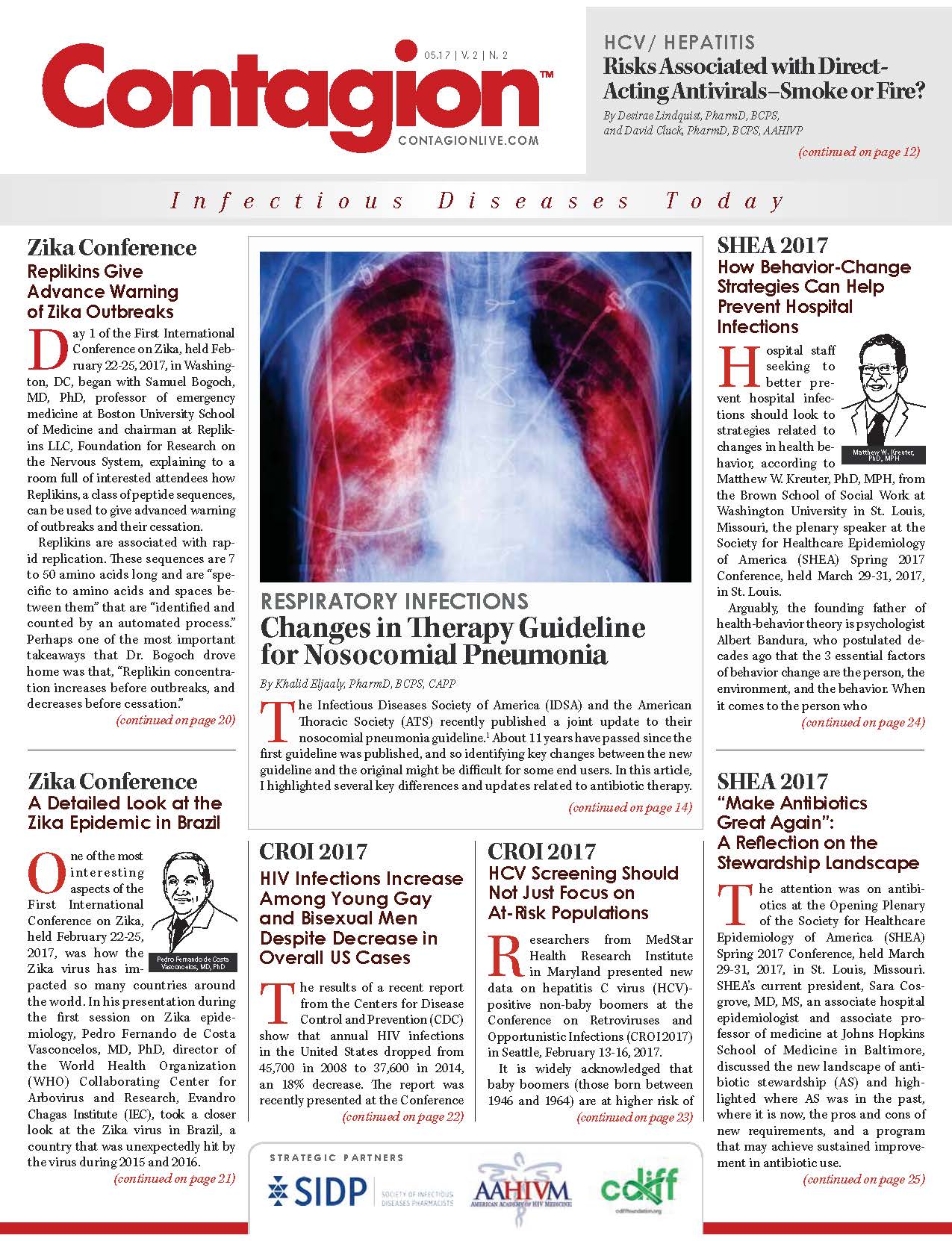A Focus on Healthcare-Associated Infections Could Improve US Health
As the repeal of the Affordable Care Act remains stalled in the US government, action plans are being put into place to address other major areas that are affecting the health of the American public.
As the repeal of the Affordable Care Act remains stalled in the US government, action plans are being put into place to address other major areas that are affecting the health of the American public: namely healthcare-associated infections. A recent opinion piece in the online publication, STAT, by medical affairs expert Stephen Littlejohn, calls our attention to this serious and growing problem1 which affects almost 750,000 Americans each year, and results in 75,000 deaths.
2
A member of the advisory board of the National Patient Safety Foundation (NPSF), Littlejohn highlights a "Call to Action" recently released by the foundation and suggests reframing, “the challenge of preventing healthcare harm as a public health crisis and proposes a national coordinated response [akin to the ways that we have previously tackled] smoking, highway accidents, and drunk driving.” However, we choose to confront the issue, Littlejohn and the NPSF bring our attention back to the true point/calling of healthcare: to improve patient health and “do no harm.”
In this issue of Contagion
™
, editorial advisory board member John Mohr, PharmD, and colleagues highlight the potential implications of 21st Century Cures Act on antibiotic drug development on page 8. The act aims to encourage the monitoring of antimicrobial resistance and increase stewardship efforts, which is particularly important in light of the fact that Centers for Disease Control and Prevention data reveal that each year at least 2 million Americans develop infections due to drug-resistant pathogens.3
Calling attention to the increased focus on decreasing healthcare-associated infections, we feature an article which focuses on the latest updates to the Infectious Diseases Society of America and the American Thoracic Society guidelines for treating nosocomial pneumonia on page 14.
On page 12, experts discuss the new information that has come to light on direct-acting antivirals to treat hepatitis C, asking the reader to consider if patients who are infected with the virus should be, what the authors call “warehoused,” until newer, and safer treatments are made available. On page 10, we include interviews with the foremost experts in the field to learn how close we are to finally discovering a cure for another viral infectious disease: HIV.
Finally, tick-borne diseases continue to emerge and affect individuals in the United States. So much so that Contagion
™
’s first Peer Exchange, coming in Summer 2017, will zero in on Lyme disease. In the article on page 18, we focus on the tick-borne diseases that are emerging in the United States and provide expert information on how to develop and deliver effective prevention and treatment methods for these diseases.
While we continue to focus on healthcare-associated infections, we will keep you informed of breaking news and updates through our website, www.contagionlive.com, on social media (Facebook [@ContagionLive], Twitter [@Contagion_Live], and LinkedIn [@Contagion_Live]), and in our email newsletters (sign up at contagionlive.com/link/2). Stay informed!
References
- LittleJohn SE. Patient safety: a public health crisis for a nation of patients. STAT news website. https://www.statnews.com/2017/04/10/patient-safety-crisis/. Published April 10, 2017. Accessed April 10, 2017.
- Centers for Disease Control and Prevention. Healthcare-associated infections. CDC website. https://www.cdc.gov/hai/surveillance/. Updated October 5, 2016. Accessed April 10, 2017.
- Centers for Disease Control and Prevention. Antibiotic/antimicrobial resistance. CDC website. www.cdc.gov/drugresistance/. Updated March 8, 2017. Accessed April 10, 2017.
- Centers for Disease Control and Prevention. Global HIV & tuberculosis. CDC website. https://www.cdc.gov/globalhivtb/index.html. Updated March 23, 2017. Accessed April 10, 2017.

